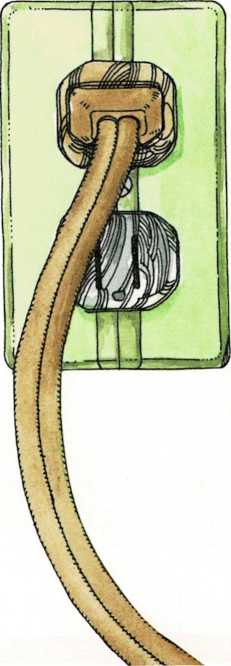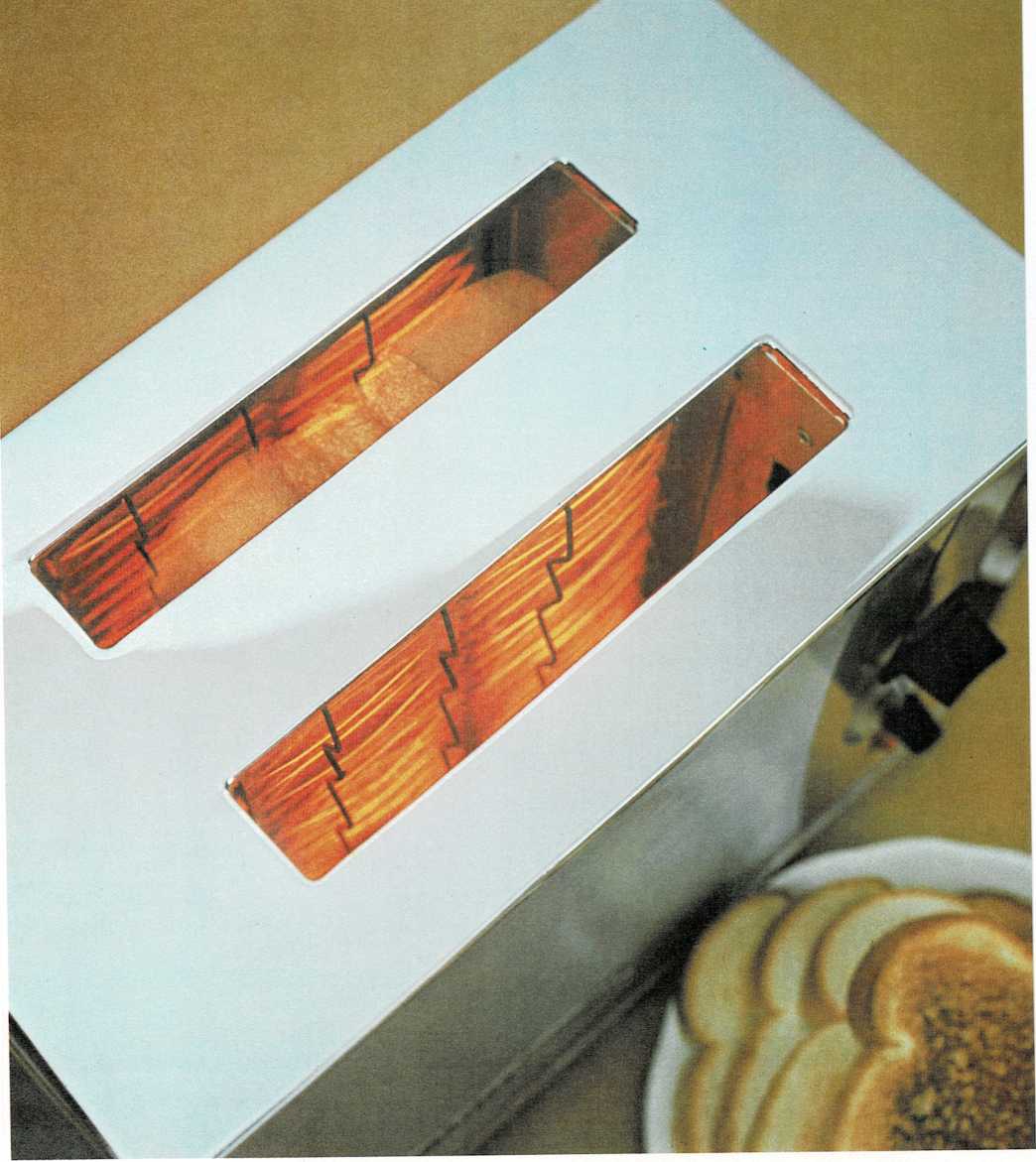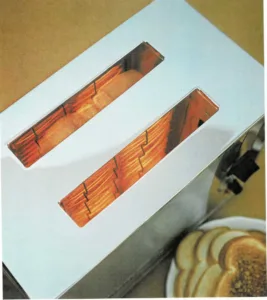
It’s hot!
When you use electricity to make toast, pop corn, iron clothes, or dry
your hair, two things happen. Electricity makes a strong push in a
wire—and the wire pushes back!
Electricity makes the toaster and other things heat up—much the way it
makes a light bulb glow. The electricity travels into and out of these
things on a pathway of wire.
Most of the wire in the pathway conducts electricity easily. The
electrons in the wire are free to move, so the current pushes steadily
along the wire. But inside these things, part of the pathway is made of
a different kind of wire.
The wire in this part of the pathway is a different kind of metal—a
kind of metal in which the electrons don’t move very easily. Often the
wire is very thin—and sometimes it is wound into a long, tight coil.
Instead of conducting electricity easily, this part of the pathway
resists (rih [zihsts)]{.smallcaps} the current. The electrons have to
push hard to move through the wire.
The pushing electrons make the molecules in the wire speed up and bump
against each other. The harder they bump and push, the hotter the wire
gets. In a few minutes, all the bumping and pushing makes the wire hot.
And the heat toasts the toast, pops the corn, smooths the clothes, or
dries your wet hair.


